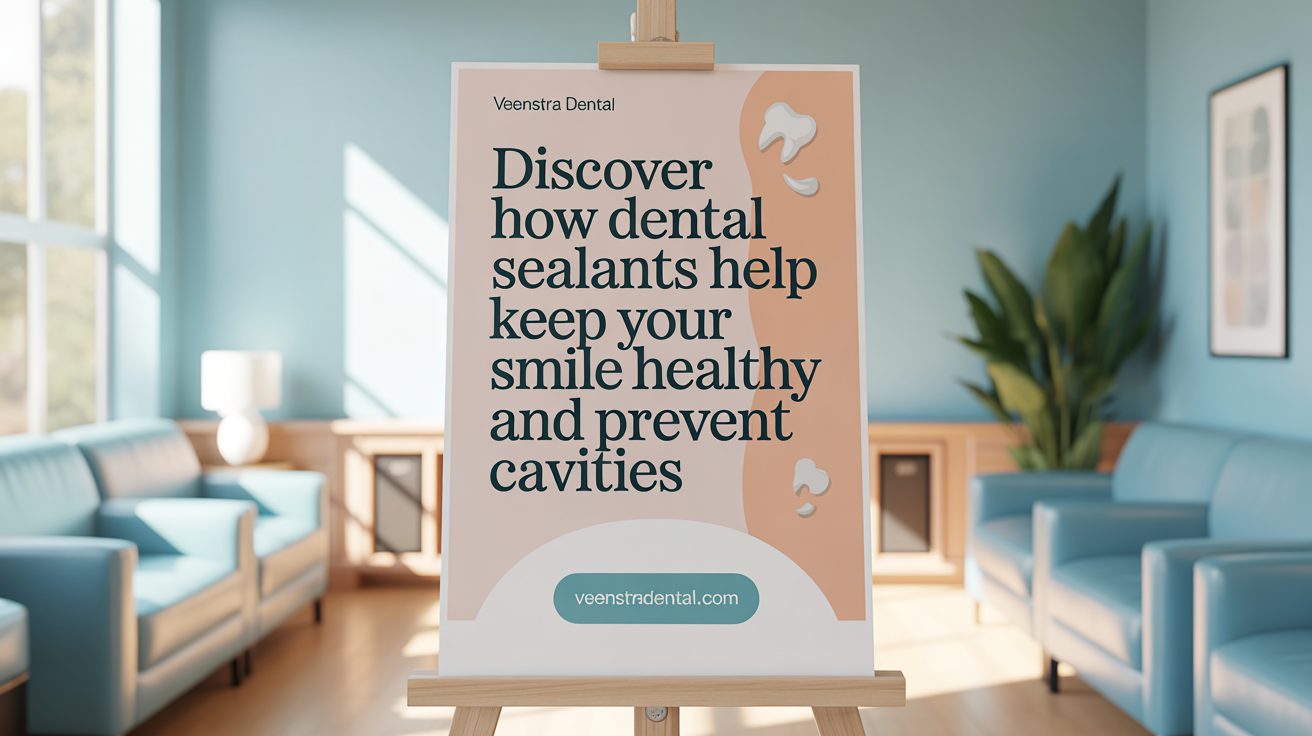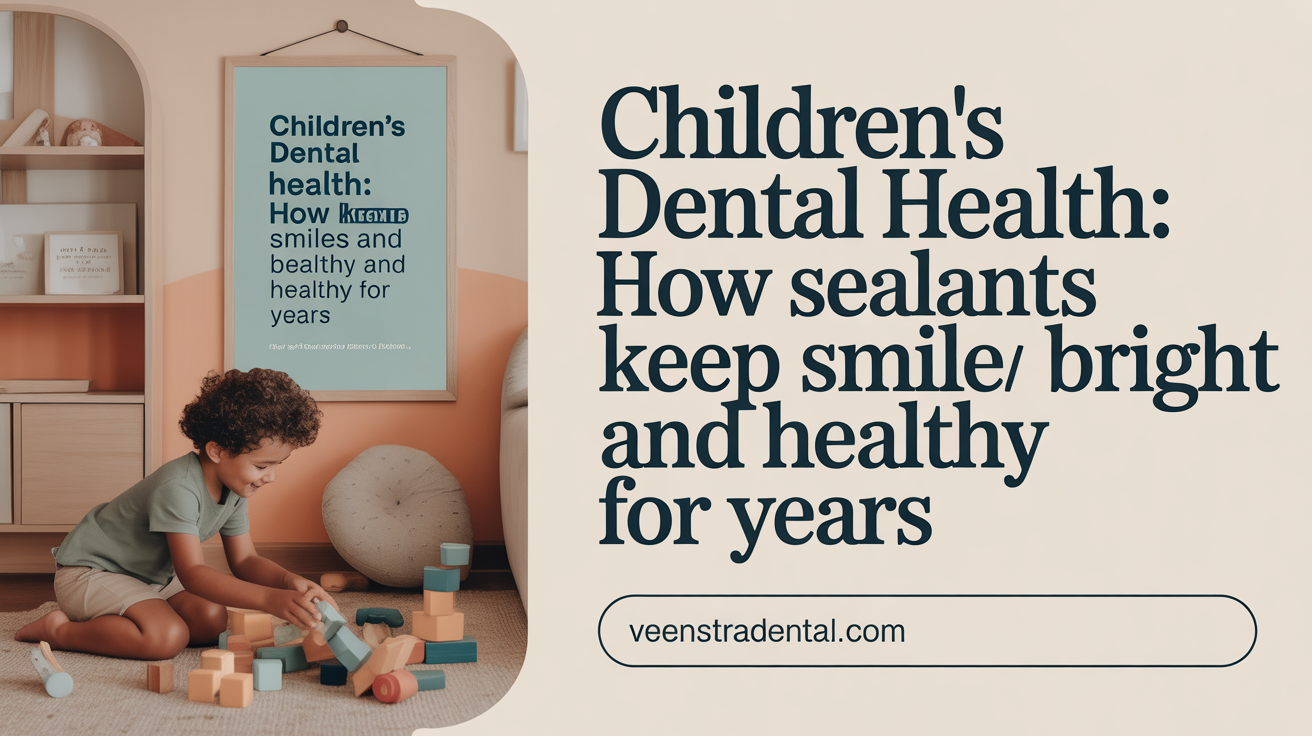Investing Early in Children's Dental Health
Dental sealants have emerged as a transformative preventive treatment that can safeguard children’s teeth from cavities and decay. This article explores how sealants work, their benefits, the application process, and why they represent an invaluable investment in growing smiles that lasts well into adulthood.
Understanding Dental Sealants: What They Are and How They Work

What are dental sealants and how do they work?
Dental sealants are a thin, plastic coating that dentists apply to the chewing surfaces of back teeth, primarily molars and premolars. Created from resin or other dental materials, these coatings act as a protective shield over the enamel.
Once the sealant is applied, it fills in the deep grooves, fissures, and pits of the teeth, smoothing out irregular surfaces. This prevents food, plaque, and bacteria from settling in these hard-to-clean areas where cavities often start.
The application process is straightforward and painless. The dentist first cleans the tooth thoroughly, then applies a gentle acid solution to help the sealant bond better. The liquid sealant is then spread over the tooth surface and cured with a blue curing light, hardening quickly.
This barrier effectively prevents acids and bacteria from damaging the enamel, significantly reducing the risk of cavities. Studies show that sealants can lower cavity risk in molars by up to 80%, making them an invaluable preventive tool.
Sealants typically last between five and ten years with proper care. Regular dental check-ups ensure they remain effective, and reapplication can be done when needed. Overall, dental sealants provide a simple, safe, and long-lasting way to protect teeth in hard-to-reach areas, supporting overall oral health.
The Benefits and Long-Term Value of Dental Sealants

What are the benefits of dental sealants?
Dental sealants are a practical preventive tool designed to protect teeth, especially molars and premolars, from cavities. These see-through, plastic coatings are applied on the chewing surfaces, filling in deep grooves and pits that are hard to clean thoroughly. By creating a physical barrier, they prevent bacteria, plaque, and food particles from getting trapped, reducing the likelihood of tooth decay.
The application process is quick and painless, often completed during routine dental visits with no need for drilling or anesthesia. Sealants last from five to ten years when properly cared for, making them a durable and effective method to safeguard oral health. They are most beneficial when applied early, immediately after teeth erupt, especially in children and teenagers, but adults can also benefit, particularly if they have deep grooves or a history of cavities.
Overall, sealants are a cost-effective preventive measure that not only helps maintain healthy teeth but also reduces the chances of requiring more invasive and costly dental treatments later on.
Are dental sealants a cost-effective preventive treatment?
Yes, dental sealants are highly cost-effective as a preventative measure against cavities. By significantly decreasing the risk of decay, especially in molars where cavities are most common, they help avoid the expense of fillings, crowns, or root canals over time.
The initial investment in applying sealants is relatively modest—typically between $30 to $60 per tooth—and this cost is often offset by the savings gained from preventing the need for more extensive dental work. Studies estimate that sealants are responsible for saving hundreds of millions of dollars annually in dental treatment costs for high-risk groups.
Furthermore, sealants are a quick and painless procedure, which adds to their appeal as an affordable preventative option. The long-term savings and health benefits make them a wise investment for both families and dental practitioners committed to proactive oral health care.
How successful are dental sealants over the long term?
Long-term success of dental sealants varies depending on material type, application techniques, and maintenance. Resin-based sealants tend to have higher retention rates, with about 80-90% remaining effective after three months and over 80% after two years. However, as time progresses, their retention can decrease, with approximately 41.3% of resin sealants fully intact after around 12 years.
Despite some wear and partial loss over time, many sealants continue to provide protection against cavities, especially when reapplication or maintenance is performed during regular dental visits. Studies show that well-maintained sealants can prevent up to 61% of cavities over five years. The durability and effectiveness of sealants are also enhanced when combined with good oral hygiene habits and fluoride treatments.
In conclusion, with proper application, monitoring, and reapplication as necessary, dental sealants offer durable, long-lasting protection that can significantly reduce caries incidence for many years.
Application and Maintenance: Simple Steps for Lasting Protection
 Applying dental sealants involves a straightforward, painless process that can be completed during a regular dental visit. The dentist begins by thoroughly cleaning the tooth surface to remove plaque and food debris. Next, an acid etching gel is applied to roughen the enamel slightly, which helps the sealant bond more effectively. After about 30 seconds, the gel is rinsed off, and the tooth is dried until a frosty appearance signals it is ready.
Applying dental sealants involves a straightforward, painless process that can be completed during a regular dental visit. The dentist begins by thoroughly cleaning the tooth surface to remove plaque and food debris. Next, an acid etching gel is applied to roughen the enamel slightly, which helps the sealant bond more effectively. After about 30 seconds, the gel is rinsed off, and the tooth is dried until a frosty appearance signals it is ready.
The sealant material, a tooth-colored resin, is then painted onto the fissures and pits of the molar or premolar. The dentist uses a curing light—a blue LED lamp—to harden the sealant quickly, creating a durable barrier against bacteria and acids. This process typically takes just a few minutes per tooth.
The safety of sealant application is well-established. It is a non-invasive procedure with minimal risks, and the materials used are considered safe by the American Dental Association. Once cured, patients can eat and drink normally immediately afterward. However, it's advisable to avoid hard or sticky foods for a day to prevent dislodging the sealant.
Sealants are designed to last for about five to ten years with proper care. Over time, they may wear down or chip, which is why routine monitoring during dental check-ups is important. Regular visits allow the dentist to assess the integrity of the sealants and reapply them if necessary.
Maintaining excellent oral hygiene, including brushing twice daily, flossing regularly, and limiting sugary foods and drinks, supports the longevity of the sealants. Proper care coupled with routine dental visits ensures that the protective barrier remains effective, helping children and adults alike maintain healthier teeth and reduce the risk of cavities over many years.
Promoting Healthy Smiles: Sealants in Long-Term Oral Health for Children

What role do dental sealants play in promoting long-term oral health, especially for children?
Dental sealants are an essential preventive tool in children's oral health care. They act as a durable shield over the grooves and pits of molars—areas most vulnerable to cavities. By filling in these crevices, sealants make teeth easier to clean and significantly reduce the risk of decay.
Research from health organizations, including the CDC, indicates that sealants can prevent up to 80% of cavities in molars, which are the most cavity-prone teeth. Since these teeth erupt around ages 6 and 12, applying sealants soon after eruption is crucial.
Their quick, painless application process encourages wide acceptance among children. Sealants can last several years—typically between 5 and 10 years with proper care—making them a cost-effective way to avoid more invasive procedures like fillings and crowns later.
Overall, sealants support healthy dental development, reduce future treatment needs, and foster lifelong good oral health habits in children.
Why is educating parents and caregivers about dental sealants important?
Parental awareness is vital for maximizing the benefits of dental sealants. Many parents are unaware that sealants are a safe, effective, and inexpensive method to prevent cavities, especially in back teeth where decay is common.
Educating parents helps them understand that sealants can protect their child's teeth for several years when applied early, which can lead to fewer cavities and less need for costly dental treatments. Awareness about the safety of sealants, including their minimal BPA exposure, reassures caregivers and encourages acceptance.
Moreover, well-informed parents are more likely to seek out preventive dental services, including sealant applications and fluoride treatments, and advocate for their children’s oral health. In underserved communities, parental education is especially critical to overcome barriers to preventive care.
Informed caregivers play a proactive role in scheduling sealant applications, promoting good oral hygiene, and participating in school or community programs. This collective effort helps improve overall oral health outcomes, reduces health disparities, and fosters a culture of prevention that benefits children throughout their lives.
| Aspect | Details | Additional Notes |
|---|---|---|
| Application Age | Best soon after molars erupt (ages 6 and 12) | Protects vulnerable, newly emerging molars |
| Durability | 5 to 10 years with proper care | Regular dental check-ups ensure longevity |
| Cost | $30-$60 per tooth; often covered by insurance | Cost-effective compared to restorative treatments |
| Safety | Confirmed safe by ADA; minimal BPA risk | No drilling or anesthesia required |
| Impact | Reduces cavity risk up to 80% | Especially effective for molars and premolars |
| Maintenance | Regular oral hygiene, check-ups, reapplication as needed | Supports long-term effectiveness |
By understanding the crucial role of sealants and the importance of parental education, we can promote healthier smiles and prevent dental disease before it begins.
Innovations Enhancing Sealant Effectiveness and Future Potential
What technological advances have improved the effectiveness of dental sealants?
Recent technological progress has transformed the way dental sealants are developed, applied, and maintained, leading to longer-lasting and more effective protection against cavities.
One major advancement involves the creation of improved resin-based materials. These new formulations bond more strongly with tooth enamel, reducing the chance of sealant failure over time. They also offer increased durability and can release fluoride, adding an extra line of defense against decay.
Bioactive sealants have entered the scene, which can promote remineralization of the tooth surface and resist wear more effectively. Nano sealants utilize nanotechnology to create ultra-fine particles that enhance surface coverage and bonding, providing better resistance in the acidic, abrasive environment of the mouth.
Eco-friendly and chemical-free options are also being developed, addressing concerns about environmental impact and patient safety.
In application techniques, innovations such as virtual sealants using 3D imaging allow for precise mapping of grooves and better customization before applying the sealant. Air abrasion and laser technologies facilitate a minimally invasive, cleaner, and faster application process.
Another promising area involves the integration of artificial intelligence and electronic health records. AI helps in evaluating patient risk factors and determining the ideal timing and placement of sealants, improving adherence to preventive protocols.
Looking ahead, the concept of 'smart' sealants is gaining interest. These are designed to monitor oral health indicators, release protective agents as needed, or alert to early signs of decay, potentially revolutionizing preventive dentistry.
In summary, technological advances are continuously enhancing the efficacy, durability, and application process of dental sealants, promising a future of smarter, more personalized oral health care.
Sealants: A Wise Investment for Lifelong Smiles
Dental sealants offer a powerful, proven, and cost-effective preventive strategy to protect children's teeth from decay. Their painless application, lasting protection, and role in reducing future costly dental procedures make them an indispensable tool in promoting healthy, confident smiles that endure. Powered by ongoing innovations and increasing education among parents, sealants stand as a smart investment that lays the foundation for optimal oral health throughout life.
References
- Dental Sealants: A Smart Investment in Your Child's Oral Health
- Why Dental Sealants Are a Smart Investment for Your Child's Oral ...
- What Are Dental Sealants and How Do They Protect Your Teeth?
- The Advantages of Dental Sealants for Children's Oral Health
- Learn from the Expert: Dental Sealants - My Children's Teeth
- Dental Sealants for Kids: What They Are and How They Work
- FAQ: What are dental sealants? - - Growing Healthy Smiles
- Protecting Tiny Teeth: The Benefits of Dental Sealants for Children
